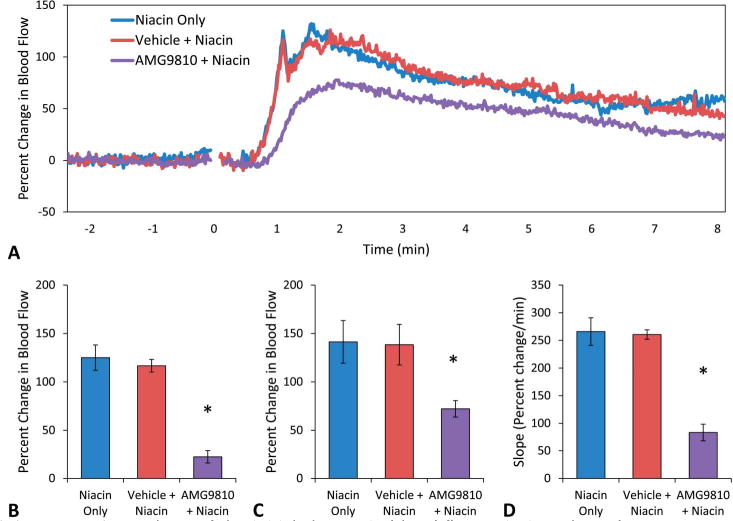FIGURE 4.

A, Mean blood flow responses to acute niacin. Niacin-only produced 2 distinct blood flow peaks (blue, n = 7). These were not changed by pretreatment with the vehicle (red, n = 6). Pretreatment with the TRPV1 antagonist AMG9810 (purple, n = 11) eliminated the initial peak, reduced the magnitude of the secondary peak, and reduced the slope. B, Blood flow at the initial peak. There was no statistical difference between niacin-only (125 ± 13 % change) and niacin after pretreatment with the vehicle (116 ± 16 % change). Pretreatment with AMG9810 significantly reduced the blood flow response at the time point of the initial peak to 22 ± 7 % change compared with niacin-only (*P < 0.05). C, Blood flow at the secondary peak. There was no statistical difference between niacin (141 ± 22 % change) and pretreatment with the vehicle (138 ± 21 % change). Pretreatment with AMG9810 reduced the secondary peak (72 ± 9 % change) (*P < 0.05). D, Slope of the initial change in blood flow. Niacin-only and pretreatment with vehicle were not significantly different (266 ± 25 and 261 ± 9 % change per minute). Pretreatment with AMG9810 reduced the slope of the response to 84 ± 15 % change per minute (*P < 0.05).
